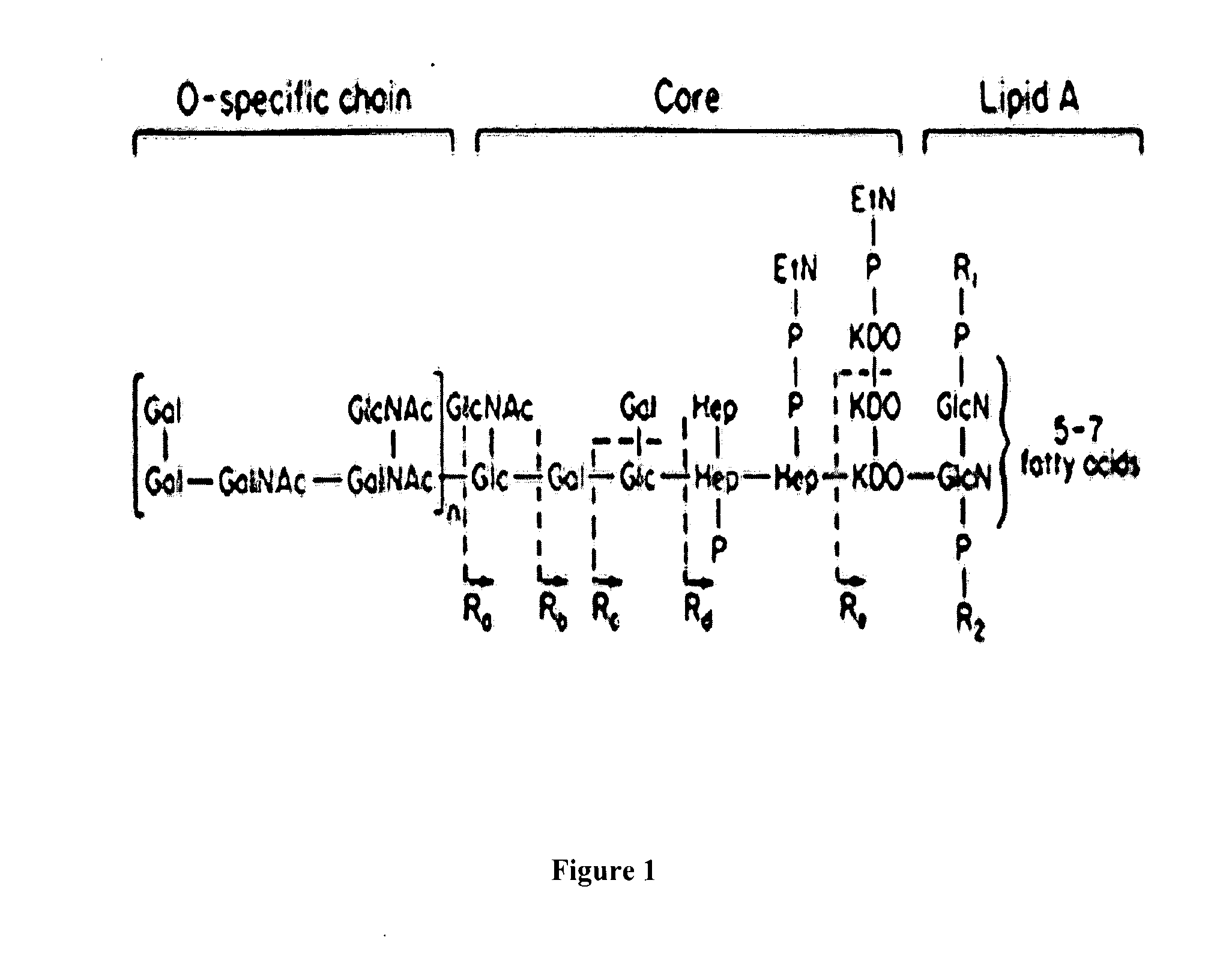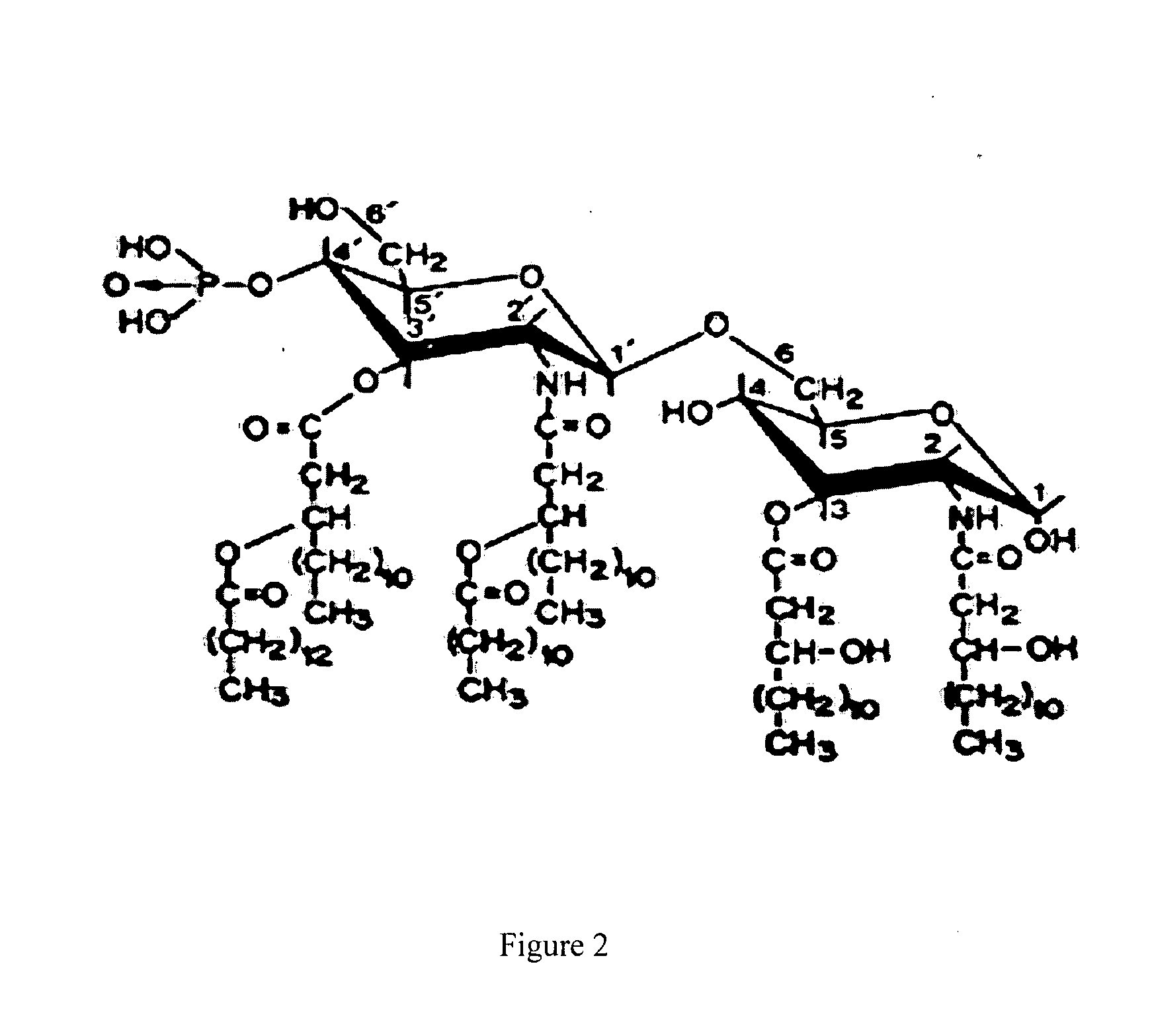Methods of making a chitosan product having an ultra-low endotoxin concentration and the ultra-low endotoxin chitosan product derived therefrom and method of accurately determining inflammatory and anti-inflammatory cellular response to such materials
a technology of endotoxin and chitosan product, which is applied in the field of making chitosan product having an ultralow endotoxin concentration and the ultralow endotoxin chitosan product derived therefrom, which can solve the problems of endotoxic shock, potentially fatal clinical condition, and high toxicity of endotoxins to mammals, particularly humans
- Summary
- Abstract
- Description
- Claims
- Application Information
AI Technical Summary
Benefits of technology
Problems solved by technology
Method used
Image
Examples
example 1
Molecular Weight Dependence on Processing Variables
[0061]Depyrogenated labware (all glass or stainless steel, baked at 250 C for 1 hrs (to <<0.1 EU / g of material or rinsed water), depyrogenated water (<0.005 EU / mL) and sterile procedures are utilized for all processing steps. All processing is done in a class 1000 / 10000 clean room using sterile procedure. Food grade chitosan, approximately 100 μm in diameter and having a MW of 326900 Da, was treated by stirring in 1.0M NaOH at 90° C. for 60 minutes at a ratio of 0.2 g / 20 mL and rinsed with 500 mL of endotoxin-free water (<0.005 EU / mL). The resultant LoTox chitosan had endotoxin levels measured by LAL to be <20 EU / g and a MW reduction shown in Table IV. This table shows the variability in MW for different treatments and volumes and is within the reproducibility of the MW measurement for broad MW peaks of 10%.
TABLE IVProperties of medical grade chitosan Lotox productTemperature ° C.Time (min)NaOH (M)Mw% changeChitosan32690090601.02997...
example 2
Ultra-Pure Chitosan Reaches the Limits of Detection of Standard LAL Assay
[0062]LoTox chitosan (LoTox) was prepared by dissolving 75 g of food grade chitosan in 940 mL of 1M NaOH at 90 C for 1 hour. Two 75 g batches were synthesized. The material was transferred in a class 10000 cleanroom under sterile conditions to pyrogen-free filters and rinsed with approximately 4 L of endotoxin-free water until the pH was approximately 7.5. The chitosan paste was measured to be 11% chitosan by weight. This material was tested for endotoxin levels by LAL assay.
[0063]Food grade chitosan was processed by treatment in 1M NaOH at 90° C. under the conditions described above preserving both a sterile and pyrogen-free environment. The material was transferred to a sterile, pyrogen filter and measurements of endotoxin were made by the method of dilution in weak acid in a standard LAL kit. FIGS. 3(a) and 3(b) shows measured endotoxin levels in EU / mL as measured and in EU / g as calculated from the mass of c...
example 3
Dirty and Clean Shells have Similar Endotoxin Levels after Deproteination
[0081]Three shell preparations from the same source were tested using standard literature processing conditions 1) dirty shells cut into large chunks; 2) dirty shells ground into a powder with maximum dimension ˜1-2 mm; and 3) a standard clean shell ground to 0.5 mm max dimension. Dried shells were tested by overnight shaking in depyrogenated water at room temperature followed by the kinetic limulus amebocyte lysate assay for endotoxin (LAL). Demineralization proceeded through the use of a 1M solution of HCl, with a 1:10 (w / v) ratio of dried shrimp shell to aqueous acid. This solution provides for a molar excess of greater than 2.5 equivalents. The vacuum dried shells (37° C. for 15 hours), ground or chopped, are massed (2 g) and reacted in a suitable pyrogen-free Erlenmeyer flask equipped with a stirbar. The heterogeneous solution is stirred for 30 minutes and the liberation of gas can be observed. After this ...
PUM
| Property | Measurement | Unit |
|---|---|---|
| Temperature | aaaaa | aaaaa |
| Temperature | aaaaa | aaaaa |
| Temperature | aaaaa | aaaaa |
Abstract
Description
Claims
Application Information
 Login to View More
Login to View More - R&D
- Intellectual Property
- Life Sciences
- Materials
- Tech Scout
- Unparalleled Data Quality
- Higher Quality Content
- 60% Fewer Hallucinations
Browse by: Latest US Patents, China's latest patents, Technical Efficacy Thesaurus, Application Domain, Technology Topic, Popular Technical Reports.
© 2025 PatSnap. All rights reserved.Legal|Privacy policy|Modern Slavery Act Transparency Statement|Sitemap|About US| Contact US: help@patsnap.com



